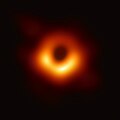This article needs additional citations for verification .(March 2025) |
| General relativity |
|---|
 |
The following timeline outlines notable discoveries in the study of black holes in physics, beginning in the 18th century and continuing to modern observations. [1] [2]

